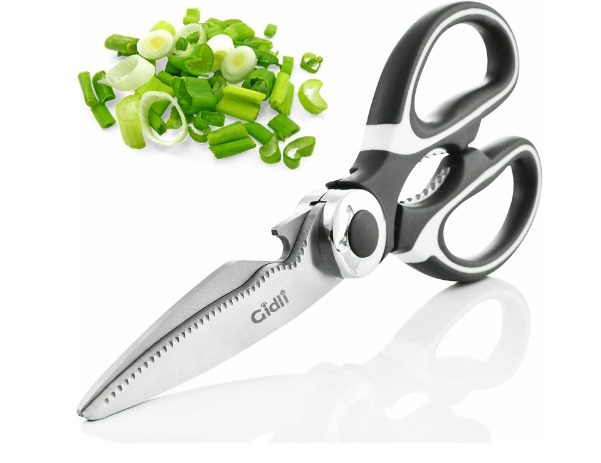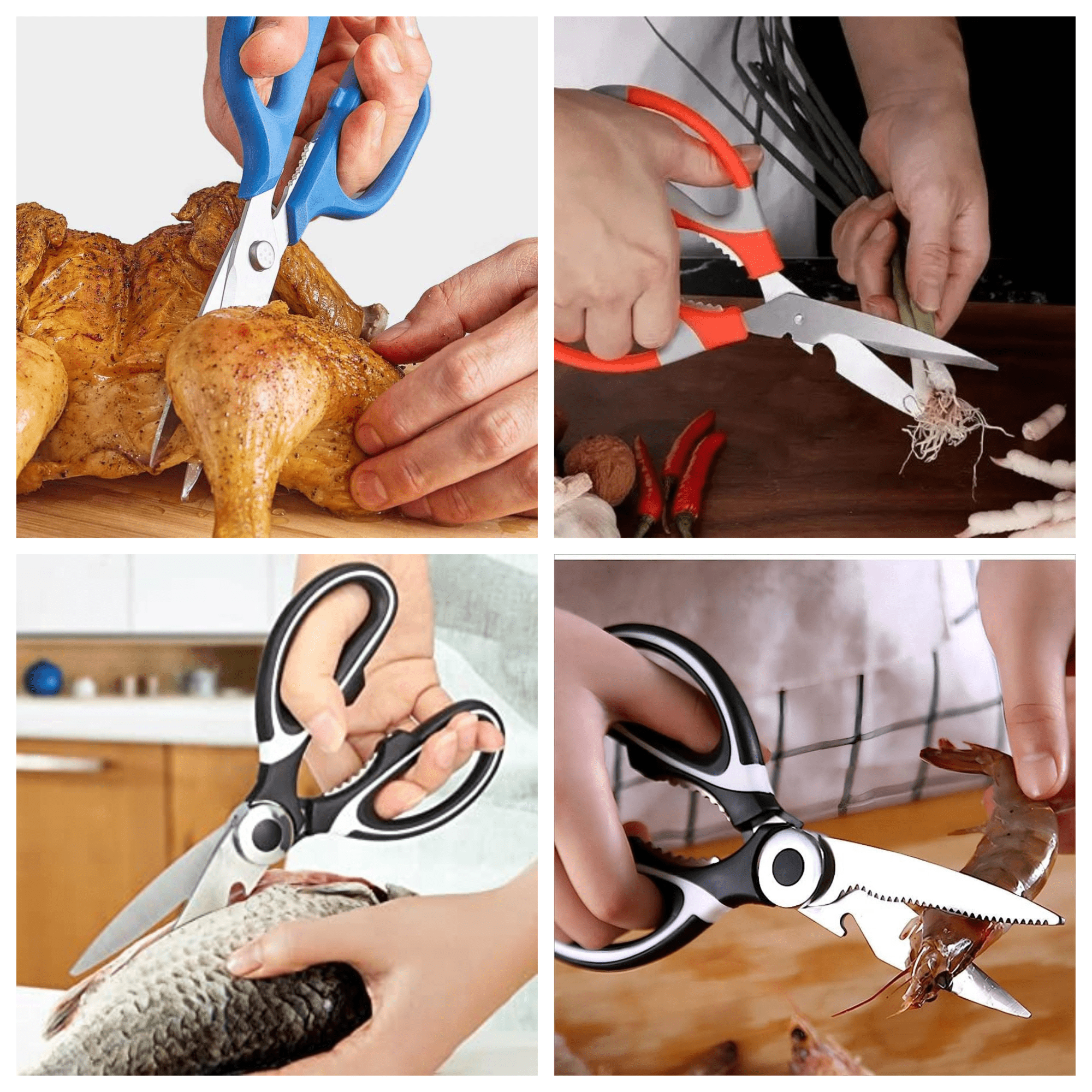Use of Kitchen Shears: Multi-Tasking Tool for Home Chef

Kitchen shears are an indispensable tool in the culinary world, often overshadowed by more conventional kitchen equipment such as knives and cutting boards. However, the versatility and precision of kitchen shears cannot be understated. In this article, we will discuss the various uses of kitchen shears, provide an ultimate guide to maintaining them, bust common myths, and explain how they can elevate your cooking game.
3 Versatile Uses of Kitchen Shears

1. Trimming Chicken Wings
Kitchen shears make trimming chicken wings a breeze. To do this, first, locate the joint connecting the wing tip to the middle section. Then, simply use the shears to cut through the joint, separating the wing tip from the rest of the wing. Repeat this process for the joint connecting the middle section to the drumette.
2. Cutting Open Lobster Shells
To easily cut open lobster shells, use the shears to cut along the top of the shell, starting from the tail and working your way toward the head. This will expose the lobster meat, making it simple to remove and enjoy.
3. Snipping Fresh Herbs
Using kitchen shears to snip fresh herbs allows for a more precise cut, preserving the natural flavors and aromas. Simply hold the herbs in one hand and use the shears to snip them directly into your dish.
➛Detail Instructions on How to Use Shears
To use kitchen shears effectively, grip the handles firmly and ensure the blades are aligned. Apply even pressure when cutting through food items, making sure not to twist or force the shears, as this can damage the blades.
Mastering the Art of Butchery with Kitchen Shears
1. Utilizing Kitchen Shears for Butchery and Trimming Tasks
Kitchen shears can be used for various butchery tasks, such as removing excess skin or fat, cutting through small bones, and trimming connective tissue.
2. Tips for Using Kitchen Shears to Remove Bones and Excess Fat
To remove bones and excess fat, first, locate the area you wish to trim. Then, carefully use the shears to cut around the bone or excess fat, making sure to remove it completely without damaging the surrounding meat.
3. Saving Time and Effort with Kitchen Shears
Utilizing kitchen shears for butchery tasks can save time and effort by allowing for quick, precise cuts that may be more difficult to achieve with a knife.
Ultimate Guide to Maintaining Kitchen Shears
1. Importance of Keeping Kitchen Shears Clean and Sharp
Keeping your kitchen shears clean and sharp is crucial for maintaining their effectiveness and longevity. Dull shears can cause uneven cuts and increase the chances of accidents in the kitchen.
2. Sharpening and Maintaining Kitchen Shears
To sharpen kitchen shears, use a scissor-specific sharpening tool or a sharpening stone. Follow the manufacturer’s instructions for the best results. To maintain your shears, clean them regularly with warm, soapy water and dry them completely before storing them.
3. Tips on Enhancing Longevity
To enhance the longevity of your kitchen shears, avoid using them on hard materials such as bones or frozen foods. Store them in a protective case or a dedicated drawer to prevent damage and keep them away from moisture, which can cause rust.
Busting Kitchen Shear Myths
1. Common Myths about Kitchen Shears
Some common myths about kitchen shears include the idea that they are only useful for cutting food items and that they are inferior to knives in terms of precision and versatility.
2. Kitchen Shears vs. Knives
While knives are essential in every kitchen, kitchen shears offer unique advantages that make them a valuable addition to your culinary arsenal. They allow for precise cuts in tight spaces, are easier to maneuver, and often cause less damage to delicate ingredients.
3. Addressing Misconceptions about Proper Care and Usage
Proper care and usage of kitchen shears involve regular cleaning, sharpening, and proper storage. By following these guidelines, you can ensure that your shears remain effective and durable over time.
FAQs
Q: What is the function of shears?
A: Shears are cutting tools designed to trim or cut various materials, such as fabric, paper, or even metal. They typically consist of two blades joined together at a pivot point, allowing for controlled cutting action.
Q: What are the uses of shears in poultry?
A: Shears are commonly used in poultry processing to trim and separate different parts of the bird, such as removing the backbone, cutting through joints, or trimming excess fat. They provide a precise and efficient way to prepare poultry for cooking.
Q: What is the function of scissors and shears?
A: Scissors and shears serve similar functions as cutting tools, but they differ in design and usage. Scissors are typically smaller and have symmetrical handles, while shears are larger and often have asymmetrical handles. Both are used for cutting various materials, depending on their specific design and intended purpose.
Q: Is kitchen shears a cutting tool?
A: Yes, kitchen shears are indeed a type of cutting tool. They are specifically designed for use in the kitchen and are versatile tools that can be used for various tasks, such as cutting poultry, trimming herbs, or opening packaging.
Q: Where are shears used?
A: Shears are used in a wide range of industries and applications. They are commonly found in sewing and tailoring for cutting fabric, in gardening for trimming plants, in metalworking for cutting sheet metal, and in various other fields where precise cutting is required.
Q: What is a kitchen shear?
A: A kitchen shear, also known as kitchen scissors or kitchen snips, is a specialized type of shear designed for use in the kitchen. It is typically used for tasks such as cutting poultry, trimming herbs, opening packaging, or even cracking nuts. Kitchen shears often have additional features like bottle openers or nutcrackers built into their handles for added convenience.
Conclusion
Kitchen shears are a versatile and valuable tool that can elevate your cooking game. By understanding their various uses, busting common myths, and learning how to maintain them properly, you can fully maximize the potential of your kitchen shears and enhance your culinary skills.

